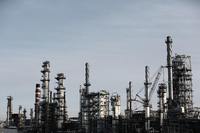Industry 4.0 comes hand in hand with AGV Robots

The way that we work has changed drastically over the years. In fact, if you were to look back at how factories used to operate a century or two ago, it would be completely unrecognisable to what it looks like now. There are many things that have changed the landscape of manufacturing and this includes the introduction of much more stringent health and safety measures, an increase in the level of production and the size of factories and manufacturing plants. In the past, the number of products that a factory could produce was reliant on how quick the workers were and there was a smaller limit to how much they could do in one day. Now that the tools provided are much more sophisticated and a lot of the process is automated, it is safer and easier for higher quantities of items to be produced. Here we look into just how the industry has evolved and what the future looks like.
The most obvious change in the way that factories work has been due to the implementation of automation. This has been particularly true in the last ten years or so where a lot of processes have changed to automatic. Technologies that help with this include pneumatic systems, robotic arms and hydraulic systems. They make the process cheaper, while also enabling companies to produce higher quantities. They also mean there are fewer safety risks for those that work in the factories such as when dealing with heavy machinery or hazardous materials. Some parts of factory work are fully automated and this includes machines that are set to just focus on one specific repetitive action such as packing, handling parts or cutting. You can also have partially manual processes that are a blend of both mechanical processes with human intervention. For example, machines do part of the work but a person would oversee certain steps such as for quality control or if human judgement must have the final say.
One great way that you can improve productivity and future proof your factory is with the addition of AGV Robots as described in agvnetwork.com, the web dedicated to the automated guided vehicles industry and technology. Unlike humans, they are more consistent - they won't have an off day for example and are more likely to produce predictable results. They can work faster and better as they don't get tired, you can tweak their processes to ensure enhanced results and also you reduce the risk of any health and safety issues with staff. AGV (Automatic Guided Vehicles) moves things around factories effortlessly and quickly. They can navigate your factory or warehouse floor without the need for an onboard driver and are key for streamlining your processes and improving the productivity of your business.
Manufacturers and factories now have a better idea of data and analytics which means that they can monitor progress and see if any areas need improvement. For example, they can tell if something is out of stock if a piece of equipment needs maintenance or how productive an area is. This means that any issues can be rectified and customers don't need to worry about items being sold out and orders going through anyway, leading to a better customer experience.
The introduction of mass production - With the benefits of better technology and automation, it also means that factories can now mass-produce items. The first half of the 20th century saw the biggest upheaval in terms of technology with steam-powered equipment becoming redundant and electricity significantly speeding up the production process. Machines could work around the clock to mass-produce items, rather than relying on having to employ more workers to keep the production line going. It was also around this time that production lines first came to be and these soon became key to the way that factories would work for years to come.

